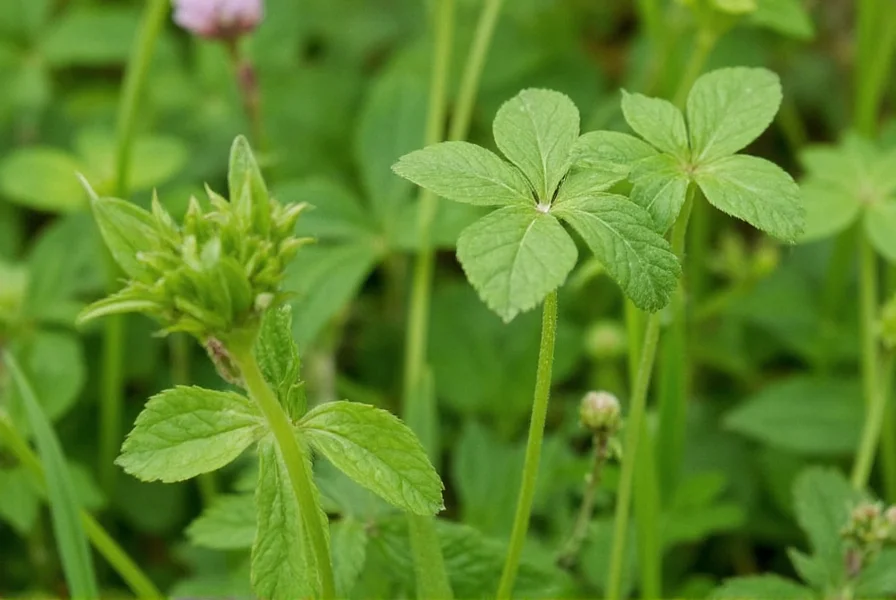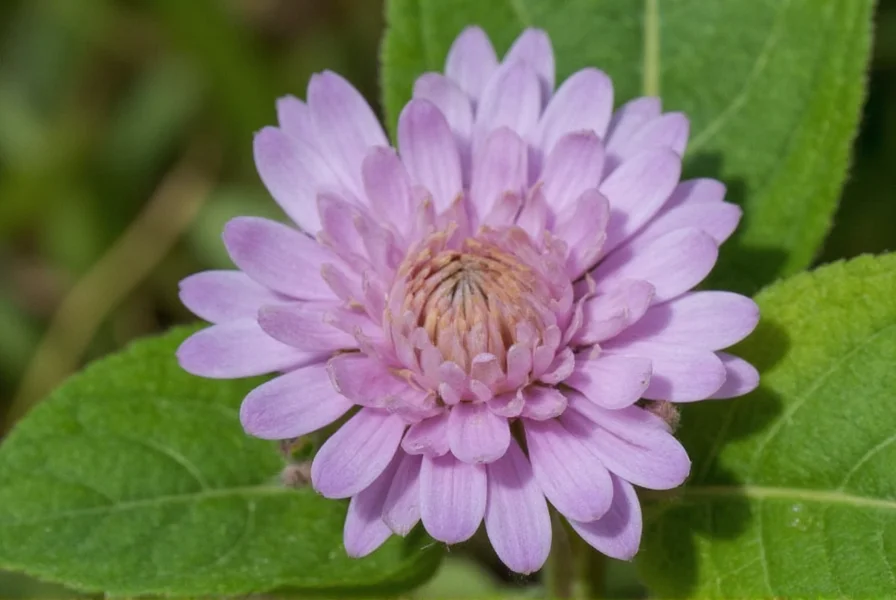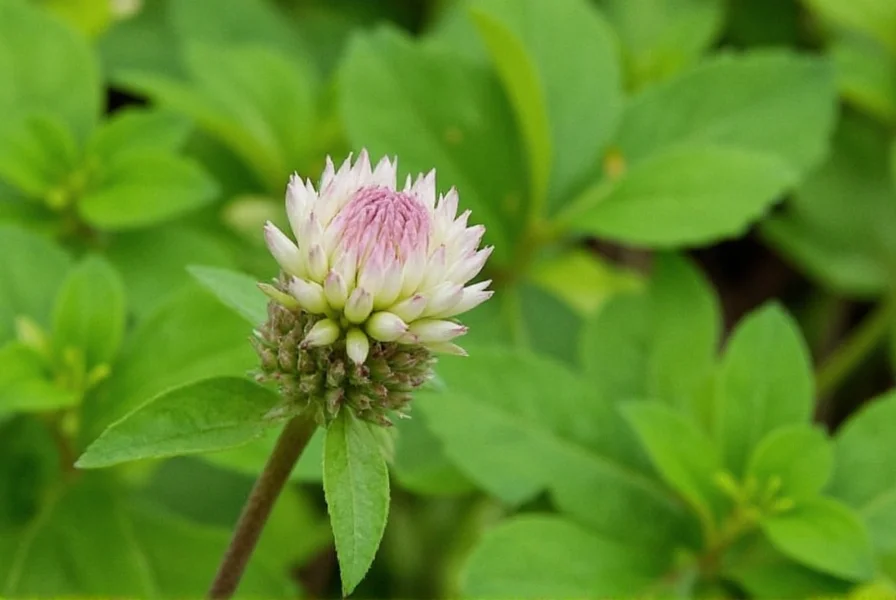Alsike clover stands out among forage legumes for its remarkable versatility in challenging environments. Unlike red clover which prefers well-drained soils, alsike clover thrives in moist, low-lying areas and tolerates both partial shade and acidic conditions. This adaptability makes it particularly valuable for farmers dealing with problematic field conditions that limit other forage options.
Botanical Characteristics and Identification
Alsike clover features distinctive trifoliate leaves with smooth, oval leaflets lacking the characteristic white "V" marking found on white clover. The plant typically grows 12-24 inches tall with hollow, branching stems. Its most recognizable feature is the flower head—a spherical cluster of 20-50 individual flowers that transition from white to pink as they mature. This color change creates a two-toned appearance that helps distinguish alsike clover from similar species.

Growing Requirements and Adaptation
Understanding alsike clover growing conditions is essential for successful establishment. This legume prefers pH levels between 5.5-7.0 and demonstrates superior tolerance to waterlogged soils compared to red or white clover varieties. While it performs best in full sun, alsike clover maintains reasonable productivity with as little as 50% sunlight exposure, making it suitable for orchard settings or partially shaded areas.
Seed germination occurs optimally between 50-75°F soil temperatures, with establishment possible through spring or late summer planting. Unlike some legumes, alsike clover doesn't require inoculation with specific rhizobia bacteria for nitrogen fixation, though using the appropriate inoculant significantly enhances performance.
Comparison with Other Clover Varieties
| Characteristic | Alsike Clover | Red Clover | White Clover |
|---|---|---|---|
| Lifespan | Short-lived perennial (2-3 years) | Biennial or short-lived perennial | Long-lived perennial |
| Soil Moisture Preference | Tolerates wet soils | Requires well-drained soils | Adaptable but prefers moist |
| Shade Tolerance | Moderate to high | Low | Moderate |
| Flower Color | White to pink | Deep pink to purple | White |
| Forage Quality | High protein, palatable | High protein, excellent | Good, preferred by livestock |
Agricultural and Ecological Benefits
Alsike clover for soil improvement ranks among its most valuable attributes. As a nitrogen-fixing legume, it typically contributes 75-150 pounds of nitrogen per acre to subsequent crops. This natural fertilization reduces synthetic fertilizer requirements while improving soil structure through extensive root development. The plant's ability to grow in poorly drained areas makes it particularly useful for reclaiming marginal lands.
For livestock producers, alsike clover as forage crop offers high protein content (18-22%) and excellent palatability. However, unlike red clover, it contains lower levels of phytoestrogens, potentially reducing fertility issues in breeding animals. The extended blooming period (June through September) provides consistent forage quality throughout the growing season.
Pollinator Support and Biodiversity
Alsike clover benefits for pollinators are substantial. Its nectar-rich flowers attract honeybees, bumblebees, and various native bee species throughout the summer months. The extended flowering period provides crucial nutritional support during mid-summer when other floral resources may be limited. Research indicates that fields containing alsike clover show 30-40% higher pollinator activity compared to grass-only pastures.
Potential Limitations and Management Considerations
While alsike clover offers numerous advantages, understanding alsike clover drawbacks is essential for informed decision-making. The plant's relatively short lifespan (typically 2-3 years in most environments) requires periodic reseeding in permanent pastures. Some livestock producers report increased incidence of bloat when animals graze pure stands, though this risk is lower than with white clover.
Proper management of alsike clover involves rotational grazing to maintain stand longevity. Allowing plants to reach 6-8 inches before grazing and maintaining a 3-4 inch residual height promotes regrowth. For hay production, cutting at early bloom stage balances yield and nutritional quality. In mixed stands, alsike clover typically comprises 20-30% of the total forage composition for optimal performance.
Practical Applications in Modern Agriculture
Contemporary farming operations increasingly recognize alsike clover in sustainable agriculture systems. Its compatibility with cool-season grasses makes it ideal for multi-species cover cropping. In organic systems, alsike clover serves as both a nitrogen source and weed suppressant when planted in rotation with cash crops.
For small-scale producers, alsike clover planting guide recommendations include seeding rates of 6-8 pounds per acre when planted alone, or 3-4 pounds when mixed with grasses. The optimal seeding depth of 1/4 to 1/2 inch ensures good soil contact while allowing easy emergence. Unlike many legumes, alsike clover establishes well through frost seeding in late winter, providing flexibility in planting schedules.

Conclusion
Alsike clover represents a valuable but often underutilized resource in agricultural and ecological management. Its unique combination of wet soil tolerance, moderate shade adaptation, and high forage quality fills a specific niche that other clover varieties cannot. By understanding alsike clover characteristics and proper management techniques, farmers and land managers can effectively incorporate this versatile legume into sustainable production systems while supporting biodiversity and soil health.
Frequently Asked Questions
Is alsike clover safe for horses?
Yes, alsike clover is generally safe for horses when consumed in moderation as part of a mixed forage diet. However, prolonged consumption of mature alsike clover in pure stands has been associated with photosensitivity in some horses, particularly those with light-colored skin. Proper pasture management including rotational grazing and maintaining diverse plant species minimizes this risk.
How does alsike clover compare to red clover for hay production?
Alsike clover typically produces less dry matter yield than red clover but offers better persistence in wetter conditions. While red clover generally has higher protein content, alsike clover maintains quality longer after flowering and is less prone to lodging. Alsike clover hay tends to cure faster due to its thinner stems, but red clover usually provides higher total seasonal yields in well-drained soils.
Can alsike clover be used in lawn mixes?
While not common in traditional lawn mixes, alsike clover can be incorporated into eco-friendly lawn blends. It tolerates moderate foot traffic and provides nitrogen to surrounding grasses. However, its taller growth habit and flowering cycle may not meet conventional lawn aesthetics. For low-maintenance or pollinator-friendly lawns, a mix containing 10-15% alsike clover with fine fescues can create a resilient, low-input turf alternative.
What causes alsike clover to turn yellow?
Yellowing in alsike clover typically indicates nitrogen deficiency despite its nitrogen-fixing capability, often due to improper inoculation or soil pH outside the optimal range (5.5-7.0). Other causes include waterlogged conditions reducing root function, potassium deficiency, or pest damage. Unlike some legumes, alsike clover yellowing isn't usually associated with viral diseases that affect other clover species.











 浙公网安备
33010002000092号
浙公网安备
33010002000092号 浙B2-20120091-4
浙B2-20120091-4